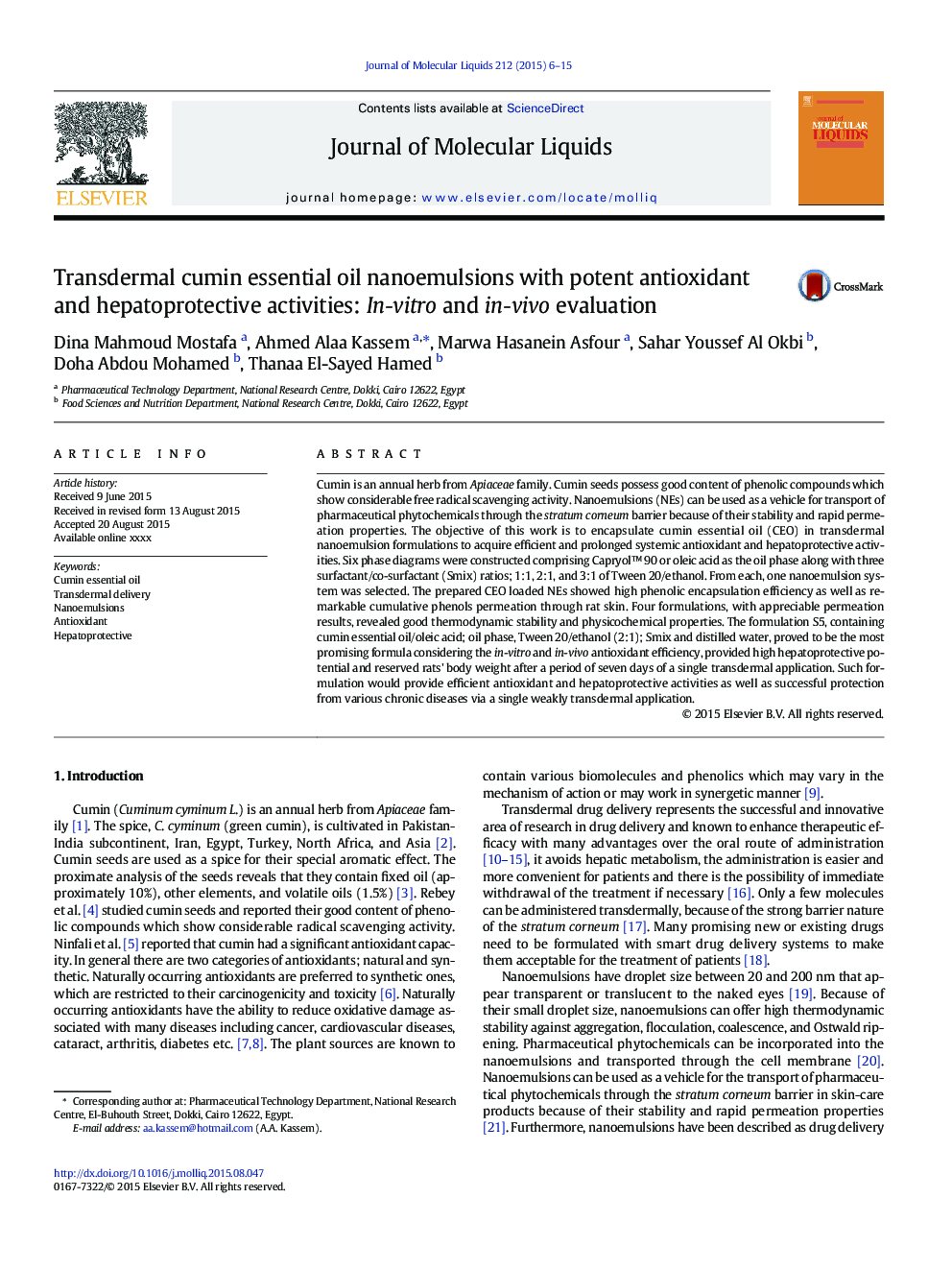| Article ID | Journal | Published Year | Pages | File Type |
|---|---|---|---|---|
| 5410499 | Journal of Molecular Liquids | 2015 | 10 Pages |
Abstract
Cumin is an annual herb from Apiaceae family. Cumin seeds possess good content of phenolic compounds which show considerable free radical scavenging activity. Nanoemulsions (NEs) can be used as a vehicle for transport of pharmaceutical phytochemicals through the stratum corneum barrier because of their stability and rapid permeation properties. The objective of this work is to encapsulate cumin essential oil (CEO) in transdermal nanoemulsion formulations to acquire efficient and prolonged systemic antioxidant and hepatoprotective activities. Six phase diagrams were constructed comprising Capryol⢠90 or oleic acid as the oil phase along with three surfactant/co-surfactant (Smix) ratios; 1:1, 2:1, and 3:1 of Tween 20/ethanol. From each, one nanoemulsion system was selected. The prepared CEO loaded NEs showed high phenolic encapsulation efficiency as well as remarkable cumulative phenols permeation through rat skin. Four formulations, with appreciable permeation results, revealed good thermodynamic stability and physicochemical properties. The formulation S5, containing cumin essential oil/oleic acid; oil phase, Tween 20/ethanol (2:1); Smix and distilled water, proved to be the most promising formula considering the in-vitro and in-vivo antioxidant efficiency, provided high hepatoprotective potential and reserved rats' body weight after a period of seven days of a single transdermal application. Such formulation would provide efficient antioxidant and hepatoprotective activities as well as successful protection from various chronic diseases via a single weakly transdermal application.
Related Topics
Physical Sciences and Engineering
Chemistry
Physical and Theoretical Chemistry
Authors
Dina Mahmoud Mostafa, Ahmed Alaa Kassem, Marwa Hasanein Asfour, Sahar Youssef Al Okbi, Doha Abdou Mohamed, Thanaa El-Sayed Hamed,
